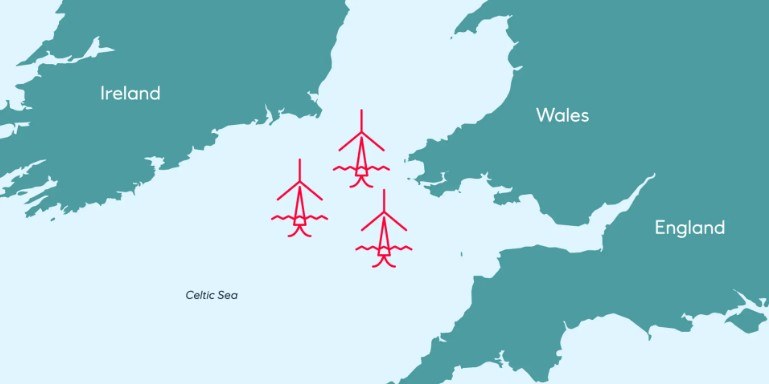Equinor is interested in developing a gigawatt scale floating offshore wind farm in the Celtic Sea in a bid to increase its renewable energy generation portfolio.
The company has announced its interest ahead of an upcoming Celtic Sea floating wind seabed leasing round in 2023. The Celtic Sea holds much potential for offshore wind generation and Equinor has expressed an interest in expanding into this promising market.
The seabed leasing round will be conducted by The Crown Estate with the property management firm preparing the surrounding area for the creation of gigawatt scale floating offshore wind projects.
UK currently has two floating offshore wind farms, with the 30MW project Hywind, which had been developed by Equinor, and Kincardine situated in Scottish waters. The country currently has the largest floating wind pipeline in the world at over 26GW, according to RenewableUK.
“Equinor has been operating in the UK for nearly 40 years and we are delighted to see new and exciting opportunities emerging in the Celtic Sea. Our team is working hard to mature our plans in Wales and South West England, as engagement with local communities is critical to Equinor’s project development of offshore wind,” said Catherine Maloney, head of business development of UK offshore wind at Equinor.
“Equinor is highly experienced at developing floating wind: we have installed the world’s first floating wind turbine, the world’s first floating offshore wind farm and are now building the world’s largest floating wind farm. We are committed to industrialising floating offshore wind and the Celtic Sea is an optimal region for further development of this important technology.”
Equinor has stated that it has conducted a comprehensive site selection process on the Celtic Sea and is now maturing its site selection through aerial surveys. The firm will work with stakeholders to develop floating offshore wind projects that create shared value for local communities and initiate opportunities for the regional supply chain.
The development of offshore wind situated in the Celtic Sea will be of interest to Regen, which recently penned a report highlighting the untapped potential that the west coast has in comparison to the east.
The Go West! study showed that development of west coast wind farms could reduce the volatility of energy generation, which would provide additional benefits for system operation.
Alongside this, it could also level up infrastructure and communities that are situated adjacent to the Celtic Sea and north and west Scotland. It could also improve the functionality of the UK’s energy system.
The UK Government has also set a target of increasing offshore wind generation to 40GW by 2030. In doing so, multiple legislations and investments form the government have seen the offshore wind sector develop substantially as the country reigns in control of its energy amid the energy crisis inflicted by volatility in the wholesale gas market.






